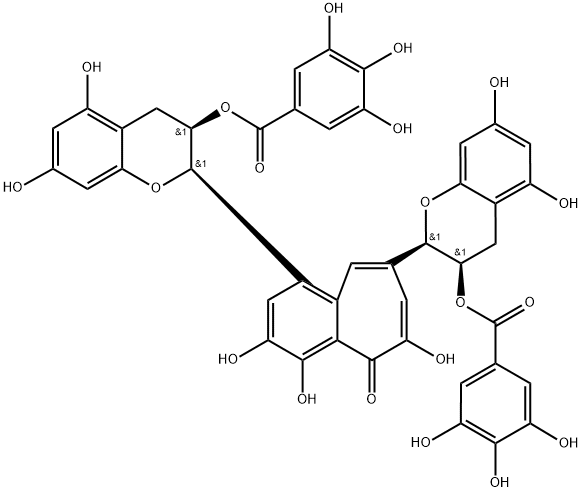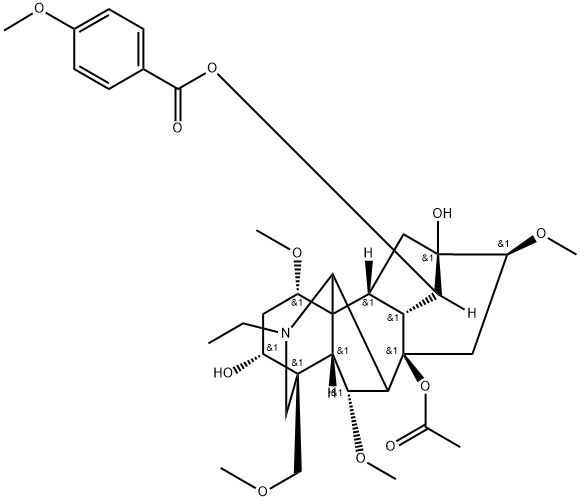Theaflavin3,3''-digallate , Analysis of the control products,> 98% , 30462-35-2
Synonym(s):
(S)-5-Hydroxy-1-(4-hydroxy-3-methoxyphenyl)-3-dodecanone;8-Gingerol
| Pack Size | Price | Stock | Quantity |
| 20mg | RMB1830.40 | In Stock |
|
| others | Enquire |
PRODUCT Properties
| Melting point: | 226~230℃ |
| Boiling point: | 1352.6±65.0 °C(Predicted) |
| Density | 1.97±0.1 g/cm3(Predicted) |
| storage temp. | Store at -20°C, sealed storage, away from moisture and light |
| solubility | DMSO : 41.67 mg/mL (47.97 mM; Need ultrasonic) |
| form | Solid |
| pka | 6.55±0.20(Predicted) |
| color | Red-purple |
| InChIKey | ZEASWHWETFMWCV-ISBUVJFSSA-N |
| CAS DataBase Reference | 30462-35-2 |
Description and Uses
Theaflavin-3,3''-digallate (TFDG) is a major polyphenol found in black tea with diverse biological activities. It has antioxidant activity, inhibiting the formation of superoxide radicals, singlet oxygen, hydrogen peroxide, and hydroxyl radicals in vitro (IC50s = 26.7, 0.83, 0.39, and 25.07 μmol/L, respectively). It also reduces hydroxyl radical-induced damage to plasmid DNA. TFDG (12.5-50 μM) prevents LPS-induced release of TNF-α, IL-1β, and IL-6, expression of JNK and p38, and nuclear translocation of NF-κB in RAW 264.7 cells. In vivo, TFDG reduces serum levels of TNF-α, IL-1β, and IL-6 and decreases pulmonary edema, pulmonary congestion, and thickening of the alveolar wall in a mouse model of LPS-induced acute lung injury. It also inhibits osteoclast formation, polarization, and osteoclastic bone resorption in vitro and reduces titanium particle-induced bone erosion and the number of mature osteoclasts in mice in a dose-dependent manner.
Theaflavin 3,3''-Digallate has been found to be an inhibitor against human pancreatic α-Amylase.
Safety
| WGK Germany | 3 |
| HS Code | 29329990 |


![[6]-Gingerol](https://img.chemicalbook.com/CAS/GIF/23513-14-6.gif)

